Modelle der Beziehung zwischen Staat und Kirche
In Erinnerung an István Kajtár
DOI:
https://doi.org/10.15170/DIKE.2020.04.01.05Schlagworte:
modernization, church and state, comparative legal historyAbstract
Honouring the memory of István Kajtár, this paper reviews the English, American, French and German modernization models of the connection between Church and State. The reason behind the historical comparative law method can be shown with a part from the speech of the Minister of Culture, József Eötvös given at the House of Representatives on 16th February, 1870: “When defining the connection between Church and State, only two systems can be followed in a constitutional country, where the equality principle is a starting point: either the State has equal impact on each confession or every confession is completely free. The first one was favoured by many and considered the only right and true constitutional system after the principles established in 1789 in France. The other one is the system of freedom, which can be seen in America and in Switzerland and which will root in such proportion as real freedom in every country of the world. There is either a state religion or oppressed religion, but in a constitutional state, both are impossible.”



